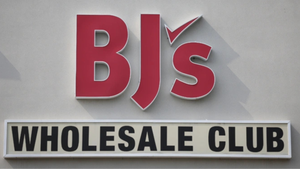Retail losses reach $1.77 trillion worldwideRetail losses reach $1.77 trillion worldwide
Research shows “empty shelves” as the main reason for consumer discontent in grocery

The global retail industry has suffered a projected $1.77 trillion in losses, even despite billions in improvements, according to a new study, which also found that the rapid growth of theft and organized retail crime has overshadowed systems and process gains in the U.S. and Canada.
The research, from global research and advisory firm IHL Group, indicates that progress was made in every region worldwide — a year ago, the total cost of inventory distortion was $1.9 trillion, indicating a slight improvement in 2023. However, the total cost to retailers for inventory distortion (combined cost of overstocks and out-of-stocks) amounted to $349 billion in lost sales for U.S. and Canadian retailers in 2022.
“Improvements in the supply chain and product availability around the world in the past year have been dramatic leading to fuller shelves,” said Greg Buzek, president of IHL Group. “Systems and processes have seen great improvement in the last three years. Unfortunately, in the United States, the incredible rise in theft has outpaced those improvements leading to 17.7% more out-of-stocks for North America than the previous year.”
The study looked at the true cost and experiences of consumers who reported the reasons they left stores without buying the items they planned to purchase (not including the prices being too high as a reason). What it found was a disconnect between what consumers want to buy at their local stores, and what they actually do buy, which continues to drive discontent.
According to the study, although consumers have seen improvements in on-shelf availability, they list various reasons for leaving without their items including: sizes not being available, lack of employee help, products locked up or in the stockroom, or empty shelves.
For food and grocery retailers specifically, “empty shelves” was cited by shoppers as the number one reason in the study for leaving a store without the products they intended to buy. The research also looked at the cost of overstocked merchandise (wrongly forecasted items or items that didn’t arrive in time for the season). Here are other key reasons for inventory distortion among food and grocery retailers in the out-of-stock loss category (see Figure 1):
Shelf empty
Couldn't find anyone to help
The price/offer didn’t match
Found someone but couldn't find
Some other reason

“Grocery made improvements in nearly every category,” Buzek told SN, adding that consumers reported finding fewer empty shelves, more personnel to help, and more knowledgeable personnel.
Additionally, “Great improvements were made in the suppliers’ ability to deliver. It is much less common to have major category supply chain issues due to a lack of available raw materials. The exception was the challenges with eggs and bird flu earlier in the year,” he said.

Finally, Buzek added that the segment is not immune to the issues of theft and specifically organized retail crime (see Figure 2). “Because most grocery stores carry health and beauty products, they are often a target. While it is rare that organized retail crime targets perishable items, those pharmacy and baby items are heavily targeted in certain regions.”
Other highlights of the study include:
Supplier issues remain the largest driver of inventory distortion at $418 billion
Theft and organized retail crime jumped to $379 billion with the greatest growth in the United States
Personnel issues (either lack of personnel or poor training) cause $291 billion in losses
Poor systems ($239 billion) and inefficient processes ($173 billion) are other major causes of inventory distortion
Spoilage and lockdown issues have seen major improvements but still are contributing $67.4 billion to the issue, but this is down from nearly $570 billion in losses in 2020
About the Author
You May Also Like






